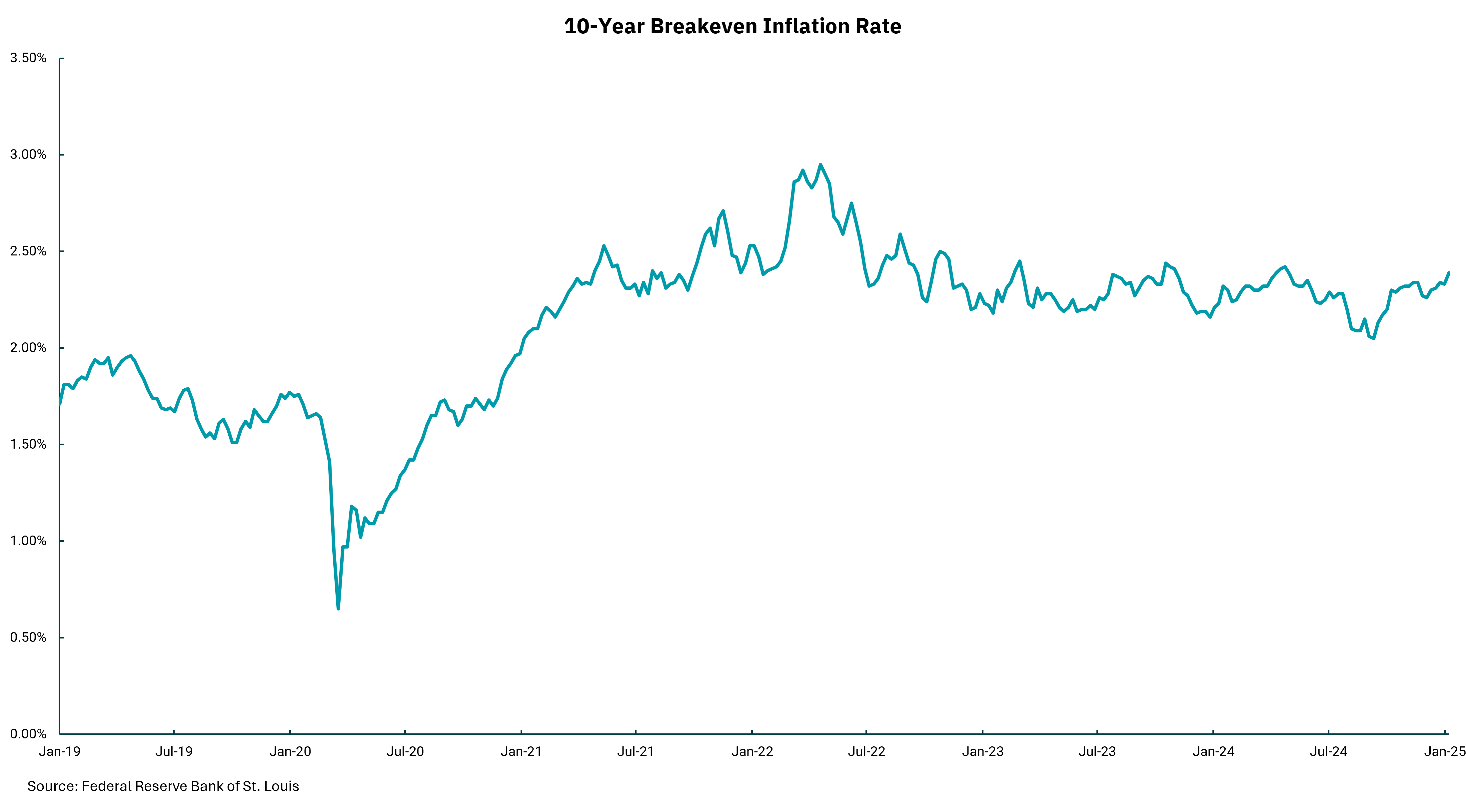
10-year inflation expectations rising
Rates for longer-term debt, including mortgages, moving higher
The stock and bond markets got a bit of a reprieve this week as measures of inflation came in a bit softer than expected. Since the Federal Reserve began lowering the target on overnight Fed Funds in September 2024, longer-term rates have been floating a bit higher. To date, while the Fed Funds target has been reduced by 1%, 10-year treasury notes have increased by a nearly identical amount of 1%.
This combination of moves in the short-end and long-end of the yield curve has resulted in the un-inversion of rates to a more "normal"-shaped yield curve. However, long rates going higher while the Fed reduces short-term rates is not a "normal" path for rate movements, and some questions have been raised as to why this is happening.
We know that the short end of the curve is where the Fed has the most direct influence on rates, so the move lower in short-term Treasuries, with maturities out to about two years, is expected and has occurred. The longer end of the yield curve, however, is influenced by several factors, including inflation expectations, growth expectations, fiscal policy and the level of uncertainty around any or all of these factors.
This week, we look at inflation expectations as a possible reason. The Fed often cites inflation expectations from consumer and business sentiment surveys as they consider the stability of future inflation. On this front, we have seen recent moves higher in sentiment-related inflation expectations. However, our chart this week looks at a market-based measure of future inflation, the breakeven rate demanded by investors in 10-year inflation-protected securities (TIPS).
The chart reveals inflation expectations are variable, with a big drop during the pandemic followed by a big rise as inflation roared in 2022 and 2023. Yet, remembering that the Consumer Price Index (CPI) peaked at just over 9%, we can also see inflation expectations peaked at only about 3%. So, even at the worst of inflation, investors had some level of confidence that, over the next 10 years, inflation would average much lower. This measure of "confidence" is why the Fed pays such close attention to inflation expectations. And so, as we look at the far-right portion of the chart and see a rise in inflation expectations as the Fed is lowering rates, it warrants some level of concern. We also can see that inflation expectations have not moved up as much as the 10-year Treasury, so there are other factors at play. However, a move higher in inflation expectations is not a welcome development.
Get By the Numbers delivered to your inbox.
Subscribe (Opens in a new tab)